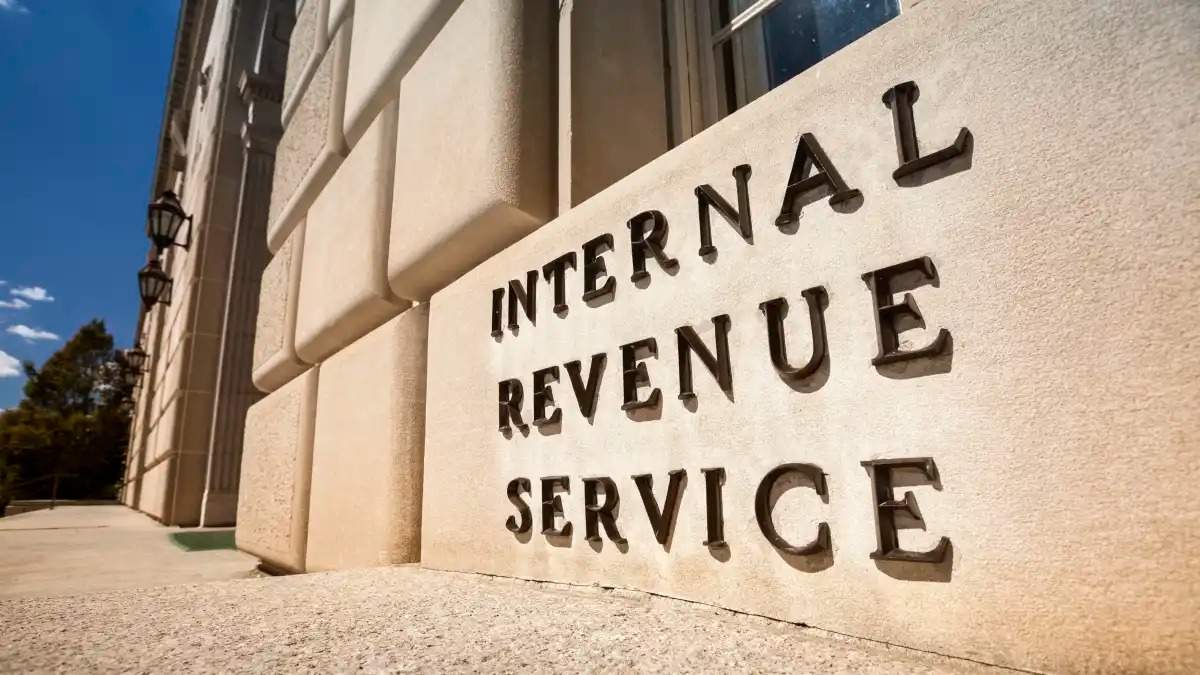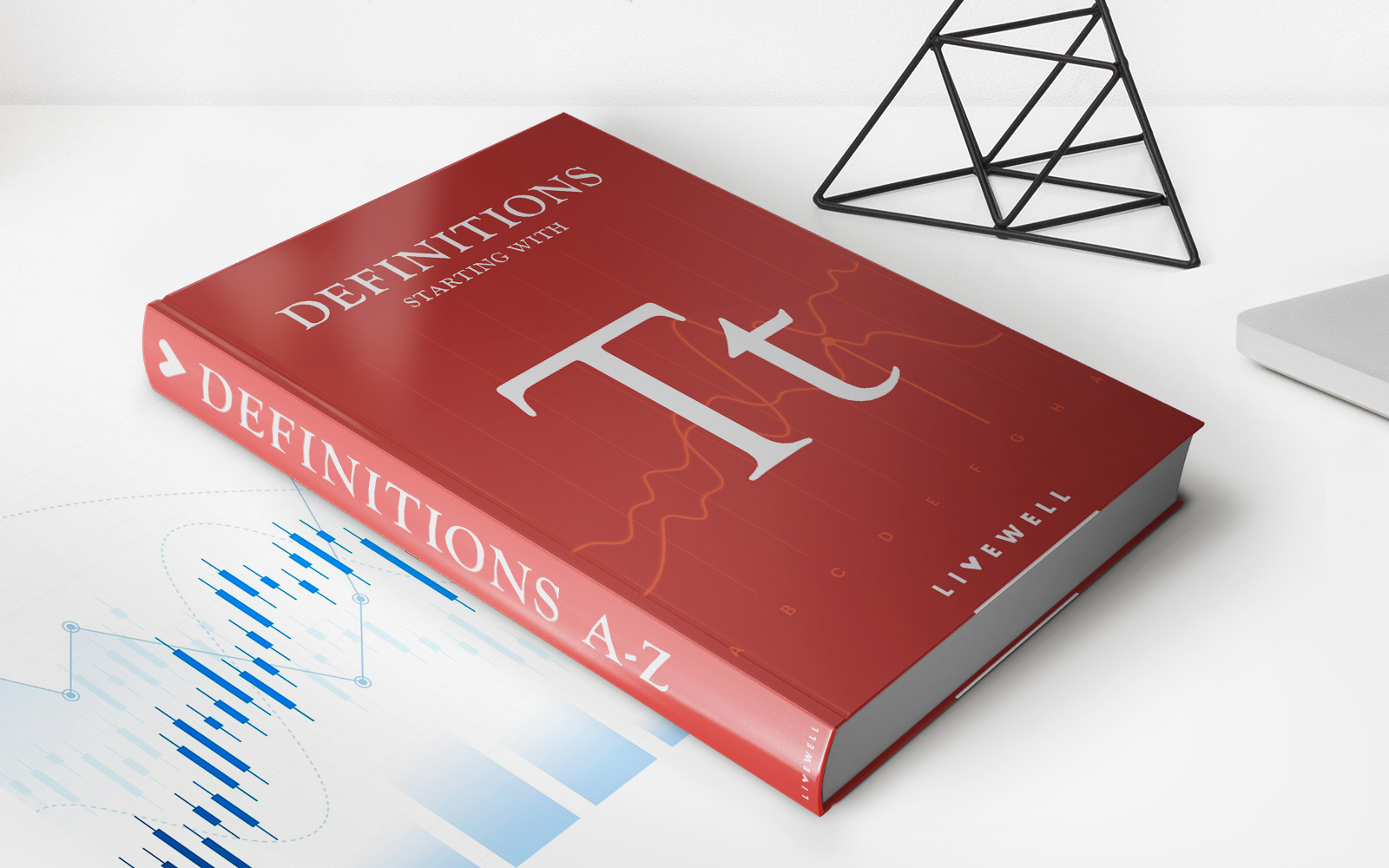

Finance
What Are Letters Of Credit
Modified: February 21, 2024
Learn about the role and benefits of letters of credit in finance. Understand how this financial instrument can facilitate secure trade transactions and mitigate risks. Find out more here.
(Many of the links in this article redirect to a specific reviewed product. Your purchase of these products through affiliate links helps to generate commission for LiveWell, at no extra cost. Learn more)
Table of Contents
- Introduction
- Definition of Letters of Credit
- Types of Letters of Credit
- How Letters of Credit Work
- Benefits of Using Letters of Credit
- Risks and Challenges Associated with Letters of Credit
- Differences Between Letters of Credit and Other Payment Methods
- Key Parties Involved in Letters of Credit Transactions
- Common Terminology Related to Letters of Credit
- Case Study: Real-Life Example of Letters of Credit in Action
- Conclusion
Introduction
In the world of international trade and finance, letters of credit play a vital role in facilitating secure and efficient transactions. Whether you’re a buyer or a seller, understanding how letters of credit work is essential for navigating the global marketplace.
A letter of credit serves as a guarantee of payment from a buyer’s bank to a seller. It ensures that the seller receives the agreed-upon payment for goods or services, while also providing the buyer with assurance that they will only have to make payment once the seller fulfills their contractual obligations.
Letters of credit are widely used in international trade because they provide a level of protection for both parties involved. They offer a secure and reliable method of payment, mitigating the risks associated with trading across borders.
In this article, we will explore the ins and outs of letters of credit, including their definition, types, working process, benefits, risks, and key parties involved. We will also delve into the differences between letters of credit and other payment methods, as well as provide a real-life case study to illustrate their practical application.
By the end of this article, you will have a comprehensive understanding of letters of credit and how they contribute to seamless and trust-based international trade.
Definition of Letters of Credit
A letter of credit (LC), also known as a documentary credit, is a financial instrument issued by a bank on behalf of a buyer (importer) to guarantee payment to a seller (exporter) for the goods or services being traded. It acts as a written commitment from the buyer’s bank to the seller, assuring that the seller will receive the agreed-upon payment once the terms and conditions of the transaction are met.
Letters of credit serve as a means to reduce risk and provide a level of security for both buyers and sellers involved in international trade. By utilizing letters of credit, parties can establish a trust-based relationship and mitigate the potential risks associated with non-payment or delivery issues.
Typically, there are three parties involved in a letter of credit transaction:
- The Issuing Bank: This is the bank that issues the letter of credit on behalf of the buyer, also known as the applicant. The bank is responsible for guaranteeing payment to the seller once the necessary documents are presented and accepted.
- The Beneficiary: This refers to the seller or exporter who is entitled to receive the payment from the issuing bank upon fulfilling the agreed-upon terms and conditions outlined in the letter of credit.
- The Advising/Confirming Bank: In some cases, when the letter of credit is confirmed, an advising bank is involved. The advising bank acts as an intermediary between the issuing bank and the beneficiary, ensuring that all the required documents are in order before payment is made.
Letters of credit can be either revocable or irrevocable. Revocable letters of credit can be amended or canceled by the issuing bank without notifying the beneficiary. Conversely, irrevocable letters of credit cannot be altered or canceled without the consent of all parties involved.
Now that we have a solid understanding of what letters of credit are and the parties involved, let’s explore the different types of letters of credit that are commonly used in international transactions.
Types of Letters of Credit
There are various types of letters of credit that cater to specific needs and requirements of buyers and sellers in international trade. Understanding the different types can help you choose the most suitable option for your business transactions. Let’s explore some common types:
- Revocable Letters of Credit: As mentioned earlier, revocable letters of credit can be amended or canceled by the issuing bank without notifying the beneficiary. Due to the lack of security provided to the seller, this type of letter of credit is not commonly used in international trade.
- Irrevocable Letters of Credit: This is the most common type of letter of credit used in international trade. It provides a higher level of security for both the buyer and the seller. Once an irrevocable letter of credit is issued, it can only be changed or canceled with the consent of all parties involved.
- Confirmed Letters of Credit: A confirmed letter of credit involves the participation of a confirming bank, in addition to the issuing bank. The confirming bank adds its guarantee to the letter of credit, providing an additional layer of assurance to the seller. This type of letter of credit is particularly useful when dealing with buyers from high-risk countries.
- Standby Letters of Credit (SLC): Unlike commercial letters of credit used for trade transactions, standby letters of credit are often used as a form of financial guarantee. They act as a promise of payment by the issuing bank to the beneficiary in the event that the buyer fails to fulfill its financial obligations.
- Revolving Letters of Credit: Revolving letters of credit are often used for ongoing or repeat transactions between the buyer and the seller. They allow for multiple drawdowns within a specified period or until a predetermined amount is reached. This type of letter of credit provides flexibility and convenience for both parties.
These are just a few examples of different types of letters of credit. Each type serves a specific purpose, and it’s important to carefully consider your business needs and consult with your financial institution when choosing the most appropriate type for your trade transactions.
Now that we understand the types of letters of credit, let’s delve into the working process of how letters of credit function in international trade.
How Letters of Credit Work
The process of how letters of credit work can be complex, but understanding the key steps is crucial for successful international trade transactions. Here’s a simplified overview of the typical process:
- Agreement of Terms: The buyer and the seller agree on the terms and conditions of the trade transaction, including the goods or services being traded, the price, the delivery date, and any other relevant details.
- Issuance of the Letter of Credit: The buyer’s bank (issuing bank) issues the letter of credit in favor of the seller (beneficiary). The letter of credit includes all the agreed-upon terms and conditions, along with any required documents for payment.
- Advising the Letter of Credit: If the letter of credit is confirmed, the issuing bank advises the letter of credit to a confirming bank. The confirming bank acts as an intermediary, ensuring that all required documents and conditions are in order.
- Shipment of Goods/Provision of Services: The seller ships the goods or provides the services as outlined in the agreement. They must comply with the terms and conditions specified in the letter of credit, including the presentation of the required documents.
- Document Presentation: The seller presents the necessary documents, such as the commercial invoice, packing list, bill of lading, inspection certificates, and any other specified documents, to the bank. The bank reviews the documents to ensure they are in accordance with the letter of credit requirements.
- Document Examination and Payment: The bank examines the presented documents and verifies their compliance with the letter of credit terms. If the documents are found to be in order, the bank makes payment to the seller, either directly or through negotiation with an accepting bank.
- Delivery of Goods/Release of Payment: Upon receiving payment, the seller delivers the goods to the buyer or provides the services accordingly. The transaction is successfully completed, and both parties fulfill their obligations.
- Settlement and Closure: The issuing bank settles the payment with the seller’s bank and closes the letter of credit. Any discrepancies or disputes in the document examination process are addressed according to the terms and conditions agreed upon.
It’s important to note that the specific process may vary depending on the terms of the letter of credit and the countries involved. Additionally, the involvement of confirming banks or negotiation banks may introduce additional steps to the process.
Now that we have explored how letters of credit work, let’s uncover the benefits that they offer for international trade.
Benefits of Using Letters of Credit
Letters of credit offer numerous benefits for both buyers and sellers engaged in international trade. Let’s explore some of the key advantages:
- Risk Mitigation: Letters of credit provide a level of security and risk mitigation for both parties involved in a trade transaction. Sellers have the assurance of payment once they meet the letter of credit requirements, reducing the risk of non-payment. Buyers, on the other hand, have the confidence that payment will only be made upon successful delivery of goods or services as specified in the letter of credit.
- Global Acceptance: Letters of credit are widely recognized and accepted in international trade. They facilitate smoother transactions between parties from different countries, eliminating potential barriers and uncertainties related to payment methods or creditworthiness.
- Payment Assurance: For sellers, letters of credit provide a guaranteed and irrevocable payment commitment from the buyer’s bank. This assurance enhances cash flow and enables sellers to plan accordingly, as they are confident in receiving payment for their goods or services.
- Reduced Cash Flow Constraints: Buyers can benefit from letters of credit by utilizing credit lines from their banks rather than tying up their working capital in advance payment. This allows buyers to conserve their cash flow while still ensuring the timely receipt of goods or services.
- Flexibility: Letters of credit can be customized to accommodate various trade scenarios, such as installment payments, deferred payment terms, or consignment arrangements. This flexibility enables buyers and sellers to negotiate terms that are mutually beneficial and align with their specific business needs.
- Documentary Control: Letters of credit require the presentation of specific documents by the seller, ensuring that all necessary paperwork and compliance requirements are met. This provides an additional layer of control for buyers, as they can review the documents before making payment, reducing the risk of receiving substandard or non-compliant goods or services.
It’s important to note that while letters of credit offer many advantages, they also involve certain risks and challenges. Understanding both the benefits and the potential drawbacks is essential for successful utilization of this financial instrument in international trade.
Now that we have explored the benefits of using letters of credit, let’s discuss the potential risks and challenges associated with them.
Risks and Challenges Associated with Letters of Credit
While letters of credit offer various benefits, they are not without their risks and challenges. It is essential for buyers and sellers to be aware of these potential pitfalls to ensure smooth transactions. Let’s explore some of the common risks and challenges associated with letters of credit:
- Document Compliance: One of the critical aspects of a letter of credit is the compliance of presented documents with the specified requirements. Even minor discrepancies or errors in the documents can lead to delays in payment or even rejection of the documents by the bank. Sellers must ensure meticulous attention to detail when preparing and submitting the required documents.
- Payment Delays: While letters of credit provide a level of payment assurance, payment delays can still occur due to various reasons, such as discrepancies in document examination, disputes, or issues with the banking process. Sellers should be prepared for potential delays and manage their cash flow accordingly.
- Costs and Fees: Both buyers and sellers need to be aware of the costs and fees associated with letters of credit. Issuing banks charge fees for issuing and managing the letter of credit, while confirming banks may charge additional fees for their involvement. Buyers and sellers should factor in these costs when negotiating the terms of the transaction.
- Dispute Resolution: Disputes can arise during the letter of credit process, particularly when there are discrepancies in document examination or interpretation of the terms and conditions. Resolving disputes can be time-consuming and may involve additional costs. Parties should have mechanisms in place to handle disputes effectively, such as mediation or arbitration clauses in the contract.
- Non-Compliance or Non-Delivery: Sellers must ensure that they meet all the terms and conditions specified in the letter of credit to avoid potential penalties or non-payment. Failure to comply with the required standards or deliver the goods or services as agreed can result in financial losses and damage to the seller’s reputation.
- Political and Economic Risks: International trade is subject to political and economic uncertainties, including changes in government regulations, currency fluctuations, trade restrictions, or force majeure events. These factors can impact the smooth execution of letters of credit and create additional risks for buyers and sellers.
Despite these risks and challenges, letters of credit continue to be a widely used and trusted payment method in international trade. By understanding the potential pitfalls and taking necessary precautions, buyers and sellers can navigate these challenges and reap the benefits of using letters of credit.
Next, let’s explore the differences between letters of credit and other payment methods in international trade.
Differences Between Letters of Credit and Other Payment Methods
Letters of credit are just one of several payment methods available for international trade. Understanding the differences between letters of credit and other methods is crucial for selecting the most suitable option for your business. Let’s explore some key distinctions:
- Cash in Advance: In this method, the buyer makes full payment to the seller before the goods are shipped or the services are provided. While it offers maximum security for the seller, it can impose cash flow constraints on the buyer and may not be feasible for all transactions.
- Open Account: Under an open account arrangement, the seller ships the goods or provides the services without requiring payment upfront. The buyer is invoiced and expected to make payment within a specified period. This method provides flexibility for the buyer but poses higher risks for the seller, as there is no guarantee of payment.
- Documentary Collections: Documentary collections involve the exchange of trade documents through banks. The buyer’s bank collects payment from the buyer upon presentation of the required documents, then remits the payment to the seller’s bank. Unlike letters of credit, documentary collections do not provide the same level of payment protection for the seller, as payment is dependent on the buyer’s willingness to make payment.
- Telegraphic Transfer (Wire Transfer): Telegraphic transfer, or wire transfer, is a direct bank-to-bank transfer of funds from the buyer’s account to the seller’s account. This method offers speed and convenience, but lacks the additional layer of security provided by the documentation process of letters of credit.
The key difference between letters of credit and other payment methods lies in the level of risk and security involved. Letters of credit offer a higher level of security for both buyers and sellers, as payment is guaranteed upon compliance with the specified terms and conditions. In contrast, other payment methods may pose greater risks, such as non-payment or delayed payment.
The choice of payment method depends on various factors, including the level of trust between the parties, the nature of the transaction, and the prevailing market conditions. It is crucial to carefully consider these factors and consult with financial advisors or trade professionals to determine the most suitable payment method for your specific trade needs.
Now that we have examined the differences between letters of credit and other payment methods, let’s move on to discussing the key parties involved in letters of credit transactions.
Key Parties Involved in Letters of Credit Transactions
Several key parties play important roles in letters of credit transactions. Understanding their roles and responsibilities is crucial for ensuring a smooth and successful trade transaction. Let’s explore the key parties involved:
- The Applicant/Buyer: The applicant is the buyer or importer who requests the issuance of the letter of credit from their bank. The applicant is typically the party responsible for initiating the trade transaction and providing the necessary instructions to their bank.
- The Beneficiary/Seller: The beneficiary is the seller or exporter who will receive payment from the issuing bank upon fulfilling the terms and conditions of the letter of credit. The beneficiary relies on the letter of credit as a guarantee of payment for their goods or services.
- The Issuing Bank: The issuing bank is the buyer’s or applicant’s bank that issues the letter of credit on behalf of the buyer. The bank is obligated to pay the beneficiary once the required documents are presented and approved.
- The Advising Bank: The advising bank acts as an intermediary bank between the issuing bank and the beneficiary. It advises the beneficiary of the issuance of the letter of credit and ensures that all required documents and conditions are in order before the transaction proceeds.
- The Confirming Bank: In some cases, when the letter of credit is confirmed, a confirming bank is involved. The confirming bank adds its confirmation to the letter of credit, providing an additional payment guarantee to the beneficiary. This can be particularly useful when dealing with foreign buyers or buyers from higher-risk countries.
- The Negotiating Bank: The negotiating bank is the bank that examines the presented documents, verifies their compliance with the letter of credit terms, and makes payment to the beneficiary. It plays a crucial role in the document examination process and ensures that the seller receives payment.
- The Carrier/Shipping Company: The carrier or shipping company transports the goods from the seller to the buyer. They play a vital role in the trade transaction, as they are responsible for ensuring the safe and timely delivery of the goods as per the letter of credit requirements.
Each party has specific responsibilities and obligations within the letter of credit transaction. Communication and collaboration between all parties are essential for the successful completion of the transaction.
Now that we have covered the key parties involved in letters of credit transactions, let’s explore some common terminology that is associated with these transactions.
Common Terminology Related to Letters of Credit
Letters of credit come with a specific set of terms and vocabulary that buyers, sellers, and financial institutions need to understand to navigate the process effectively. Familiarizing yourself with common terminology related to letters of credit is crucial for successful trade transactions. Let’s explore some of the key terms:
- Letter of Credit (LC) or Documentary Credit: The written instrument issued by a bank at the request of the buyer, guaranteeing payment to the seller upon fulfillment of specified terms and conditions.
- Beneficiary: The seller or exporter who is entitled to receive payment from the issuing bank upon complying with the terms and conditions of the letter of credit.
- Applicant: The buyer or importer who applies for the issuance of the letter of credit from their bank. The applicant is responsible for initiating the trade transaction.
- Issuing Bank: The bank that issues the letter of credit on behalf of the buyer. This is the buyer’s bank, and they assume the obligation of payment to the beneficiary upon presentation of the required documents.
- Advising Bank: An intermediary bank that advises the beneficiary of the letter of credit’s issuance. The advising bank’s role is to authenticate and forward the letter of credit to the beneficiary.
- Confirming Bank: A bank that adds its confirmation to the letter of credit, providing an additional layer of payment guarantee to the beneficiary. The confirming bank is typically involved when dealing with international transactions or higher-risk buyers.
- Documentary Compliance: Ensuring that all presented documents comply with the terms and conditions specified in the letter of credit, including accuracy, completeness, and conformity.
- Uniform Customs and Practice for Documentary Credits (UCP 600): This is a set of rules published by the International Chamber of Commerce (ICC) that defines the rights, responsibilities, and practices for the issuance and use of letters of credit.
- Bill of Lading (B/L): A document issued and signed by the carrier, acknowledging the receipt of the goods and providing evidence of the contract of carriage.
- Shipping Documents: Documents required as proof of shipment, including commercial invoice, packing list, bill of lading, insurance certificate, and any other specified documents mentioned in the letter of credit.
These are just a few examples of the common terms associated with letters of credit. It is essential to familiarize yourself with the specific terms and conditions outlined in each letter of credit, as they may vary based on the transaction requirements and the rules applicable to the specific letter of credit, such as the UCP 600.
Now that we have covered the common terminology related to letters of credit, let’s move on to a real-life case study to illustrate the practical application of letters of credit in international trade.
Case Study: Real-Life Example of Letters of Credit in Action
To illustrate the practical application of letters of credit, let’s consider a real-life case study involving an international trade transaction.
Company A, based in the United States, wants to purchase a shipment of textiles from Company B, located in India. Recognizing the need for a secure and reliable payment method, the two companies agree to utilize a letter of credit for the transaction.
Here is a step-by-step breakdown of the process:
- The Buyer’s Request: Company A, acting as the buyer, initiates the request for a letter of credit from their bank, specifying the terms and conditions of the trade transaction, such as the quantity and quality of the textiles, the delivery date, and the necessary shipping documents.
- Issuance of the Letter of Credit: Company A’s bank, the issuing bank, reviews the buyer’s request and issues an irrevocable letter of credit in favor of Company B, the seller. The letter of credit is transmitted to Company B through an advising bank, which confirms the authenticity and terms of the letter.
- Production and Shipment: Company B begins production of the textiles and arranges for their shipment to the United States. They ensure that all necessary shipping documents, such as commercial invoice, packing list, bill of lading, and inspection certificates, are prepared according to the requirements stated in the letter of credit.
- Document Presentation: Once the shipment is ready, Company B presents the shipping documents to their bank, the negotiating bank, which carefully examines them to ensure compliance with the letter of credit’s terms and conditions.
- Payment and Goods Delivery: The negotiating bank, satisfied with the document compliance, makes payment to Company B as stipulated in the letter of credit. Company B then releases the shipment to the carrier for transport to Company A.
- Settlement and Closure: Company B’s bank, the negotiating bank, will seek reimbursement from Company A’s bank, the issuing bank, for the payment made to Company B. Upon receiving the necessary funds, the negotiating bank closes the letter of credit, and the trade transaction is successfully completed.
In this case study, the utilization of a letter of credit provided both Company A and Company B with reassurance and security throughout the transaction. Company A was able to ensure that payment would only be made upon the satisfactory delivery of the textiles, while Company B had the confidence of receiving payment once they complied with the specified terms and conditions.
This demonstrates the importance of letters of credit in facilitating international trade by providing a level of trust and mitigating the risks associated with cross-border transactions.
Now that we have explored a real-life case study, let’s conclude our article with a summary of the key points discussed.
Conclusion
Letters of credit are vital instruments in international trade, providing a secure and reliable method of payment for buyers and sellers. By understanding the definition, types, working process, and key parties involved in letters of credit transactions, businesses can navigate the global marketplace with confidence.
We explored the benefits of using letters of credit, such as risk mitigation, global acceptance, and payment assurance. However, it’s important to acknowledge the potential risks and challenges, including document compliance, payment delays, and costs and fees. By being aware of these potential pitfalls, businesses can take necessary precautions to ensure smooth transactions.
We also discussed the differences between letters of credit and other payment methods, emphasizing the level of risk and security provided by letters of credit compared to cash in advance, open account, documentary collections, or telegraphic transfers.
Furthermore, we highlighted the key parties involved in letters of credit transactions, including the applicant/buyer, beneficiary/seller, issuing bank, advising bank, confirming bank, negotiating bank, and the carrier/shipping company. Collaborative efforts and effective communication between these parties are essential to ensure successful trade transactions.
Additionally, we explored the common terminology associated with letters of credit, such as letter of credit, beneficiary, applicant, issuing bank, advising bank, confirming bank, documentary compliance, and uniform customs and practice for documentary credits (UCP 600). Familiarizing oneself with these terms is crucial for a smooth understanding and execution of letters of credit.
To illustrate the practical application of letters of credit, we presented a real-life case study involving a trade transaction between a U.S.-based buyer and an Indian-based seller. This case study demonstrated the step-by-step process of utilizing a letter of credit to ensure secure payment and successful delivery of the goods.
In conclusion, letters of credit offer numerous advantages for buyers and sellers engaged in international trade. They provide confidence, security, and flexibility while mitigating risks. By understanding the intricacies of letters of credit, businesses can leverage these instruments to foster seamless, efficient, and trusted global trade relationships.














